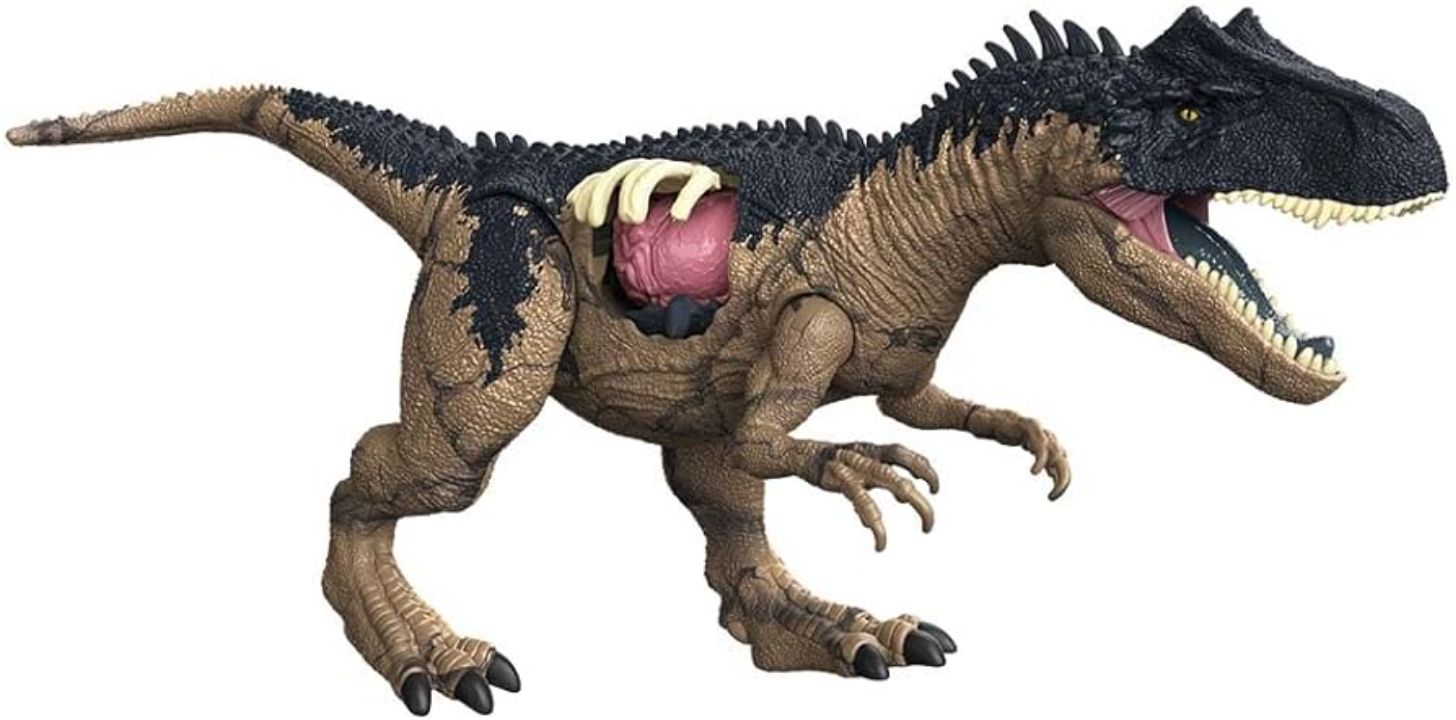As featured on Episode 5 of Netflix’s Life On Our Planet, Allosaurus was a type of dinosaur that is also known as the formidable predator of the late Jurassic. They were clever as they used to prey on easier targets, baby Diplodocus (another type of dinosaur). Learn about them in detail right below.
Life On Our Planet is a Netflix documentary series produced by Silverback Films (Our Planet II, Wild Isles) with Steven Spielberg‘s Amblin Television. Like Prehistoric Planet on Apple TV Plus, it uses state-of-the-art technology to resurrect some of the most amazing predators and extinct animals from prehistory on our screens.
With narration by Morgan Freeman, produced by Steven Spielberg, and made in partnership with Industrial Light & Magic, this is a must-see look at the amazing species that have called the planet home over the ages.
But the show doesn’t just focus on the past; it also takes us on a close-up look at all of the main animal dynasties that have inhabited Earth throughout history. One of the extinct animals that the show focuses on and viewers have been most interested in is Allosaurus, a type of dinosaur. Well, let’s discuss it in detail.
Life on Our Planet: Allosaurus Was a Clever Predator Who Used to Prey on Baby Diplodocus!
Different predators and extinct animals are featured in the Netflix docuseries. Allosaurus also makes it to a brief screen time on Episode 5 of Life On Our Planet. Before knowing about them in detail, let’s know what the Netflix series shows us about them.
Allosaurus was one of the largest predators at the time. They frequently preyed on Diplodocus, another type of dinosaur. However, they were not after adults. They were clever and targeted much easier prey, baby Diplodocus.
 Allosaurus always preyed on easier targets.
Allosaurus always preyed on easier targets.
Image Source: Netflix
Scientists believe that in order to protect themselves, the baby diplodocus assumed a hiding position similar to that of contemporary antelopes as shown in Life On Our Planet. In an interview with Tudum, cinematographer Jamie McPherson said,
That was one of the most exciting [hunt scenes]
To maximize the dread, the filmmakers planned the scene to occur on a wet night and we can say it succeeded. It was the show’s most technically challenging visual effects scene. It meant creating not just the extinct dinosaurs but also the late Jurassic vegetation, which existed about 152 million years ago and fed enormous herbivores like the long-necked diplodocus.
Know More About Allosaurus!
 Allosaurus is also known as the formidable predator of the late Jurassic.
Allosaurus is also known as the formidable predator of the late Jurassic.
Image Source: Amazon
Allosaurus was a formidable predatory dinosaur that dominated the Earth between 155 and 150 million years ago. Paleontologists and dinosaur fans worldwide are captivated by the legacy of this amazing species, which was one of the most notable apex predators of its day.
The Allosaurus was a massive theropod dinosaur that grew up to 40 feet in length and 16 feet in height. Its strong hind limbs, pointed & serrated teeth and sturdy build made it an ideal hunting animal. Its huge, forward-facing eyes and strong jaw, which included over 60 teeth, made its cranium very remarkable. These features allowed it to successfully catch and devour its food.
Allosaurus occupied a lush, semi-arid habitat that was home to several herbivorous dinosaurs. Allosaurus is thought to have been an apex predator that fed on ornithopods, other smaller dinosaurs, and sauropods like Apatosaurus and Diplodocus.
The fact that Allosaurus is most likely hunted in packs is one of its most amazing features. Based on fossil evidence, it is possible that these dinosaurs hunted in groups and used cooperative tactics to bring down larger prey. Unlike many other theropods, Allosaurus exhibited social behavior.
Allosaurus encountered difficulties and dangers in its surroundings, including other predatory dinosaurs and natural calamities, despite its exceptional hunting skills. As the Late Jurassic period gave way to the Cretaceous, it eventually lost its position as the top predator and was replaced by more sophisticated species like the Tyrannosaurus rex.
Allosaurus research has yielded priceless insights into the ecology and behavior of Late Jurassic dinosaurs. The discovery of Allosaurus fossils in North America and Europe has provided insight into the species’ range and environments.
To sum up, Allosaurus was an amazing dinosaur that was well-known for its size, power, and possible tendency toward pack hunting. Allosaurus research continues to yield vital information about Earth’s prehistoric past and the evolution of predatory dinosaurs. Its existence throughout the Late Jurassic period contributed to the complex web of life in prehistoric times.

